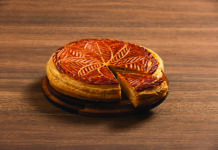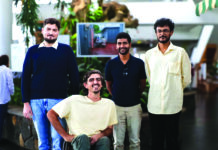After two years of confinement and an oil spill, the inhabitants of the Mahébourg region had to raise their heads. Highly involved in protecting the lagoon, the Eco-Sud association has also turned its attention to the land, creating a community farm in the heart of the Ville-Noire district: ROC (Resilient Organic Community) makes agroecology accessible to even the most modest households!
Dominique Bellier
Located in the heart of Ville Noire, next to Hamilton College, near Rivière La Chaux and Tannière Creek, ROC has brought life back to a four-acre plot of land, half of which is now home to vegetable and fruit crops, as well as the organization’s premises (greenhouses, training rooms, kitchen and dining room, etc.).
It all began in December 2020 with the clearing and preparation of ground that had been abandoned for several years, then with the opening of the solidarity store in May 2021, which helps families chosen by local associations (Caritas, Mahébourg Espoir, etc.). Currently, 31 families receive a monthly basket of food and non-food supplies, contributing one-third of its value. They are also invited to take part in the farm’s activities on Tuesdays and Thursdays.
ROC works for food sovereignty and the development of sustainable, pesticide-free agriculture, which regenerates the soil rather than exhausting it, by bringing together a close-knit, active community, passing on the knowledge and techniques developed here, and fostering social ties and conviviality, thanks to weekly meals cooked on site with the fruits and vegetables that grow easily in Mauritius, without the need to wage war on insects…
ROC, a community farm in the heart of Ville Noire
Bioreactors and composts
Since its inception two years ago, ROC has trained 200 people in the various agroecological techniques required to produce their own organic fruit and vegetables. These days, the organization is launching theEngagement Day concept for companies wishing to strengthen their teams through a virtuous half-day activity, where everyone gets their hands dirty in different workshops, before sharing a meal or tasting local recipes brought up to date! The same type of initiative is used at the coral nursery and in the wetlands where Eco-Sud operates.
But before they got there, the trainees gardened or set up bioreactors to make compost… “It’s unacceptable,” exclaims Sébastien Sauvage. It’s unacceptable,” exclaims Sébastien Sauvage, “that the majority of green waste goes every day to clutter up Mare Chicose unnecessarily, when it’s so important to recover it to restart the carbon cycle!”
Several techniques are deployed at ROC to transform this green gold full of virtues: vermicompost – or plant waste transformed by earthworms – which produces a wonderfully scented potting soil and a highly concentrated liquid fertilizer. Slow compost, in which the formation of mycelium networks (fungi) is encouraged by continuous oxygenation for three or four months in bioreactors. The vegetable charcoal that feeds these bioreactors, manufactured in an octagonal-shaped furnace, which ensures oxygen-free combustion of crushed pieces of wood…
Terroir and taste experiences
On the planting side, various cultivation techniques produce fruit and vegetables, while enriching the soil with balanced inputs of green or brown organic matter, compost and fertilizers, creating hotbeds of biological activity at the foot of the banana trees, in the planting rings or beds. Artist and architect Oliver Maingard oversees the implementation of all these techniques, in which he has been trained.
Here, crop rotation is practised, varietal diversity is favoured, and all the rainwater that falls on the roofs is collected, while we wait to find solutions for properly filtering the water from the surrounding streams. Here, the sweet potato is the queen of the kitchen, and is used in a multitude of ways. There’s a wide variety of brèdes, and bananas are used in both sweet and savory dishes. Passion fruit and nonis are used to flavour drinks, desserts, condiments and broths.
At every meal, the cooks serve a delicious herbal tea made from a wide selection of medicinal herbs, which have been bubbling away in large pots for some time. Manioc, taro, chouchous and calebasses, beans and other legumes are used in the varied recipes that this happy community includes on its menus. Around the large square table on Thursday April 6, there were students and the curious, a few well-informed tourists, volunteers, ROC staff and beneficiaries. Conversation was in full swing!








